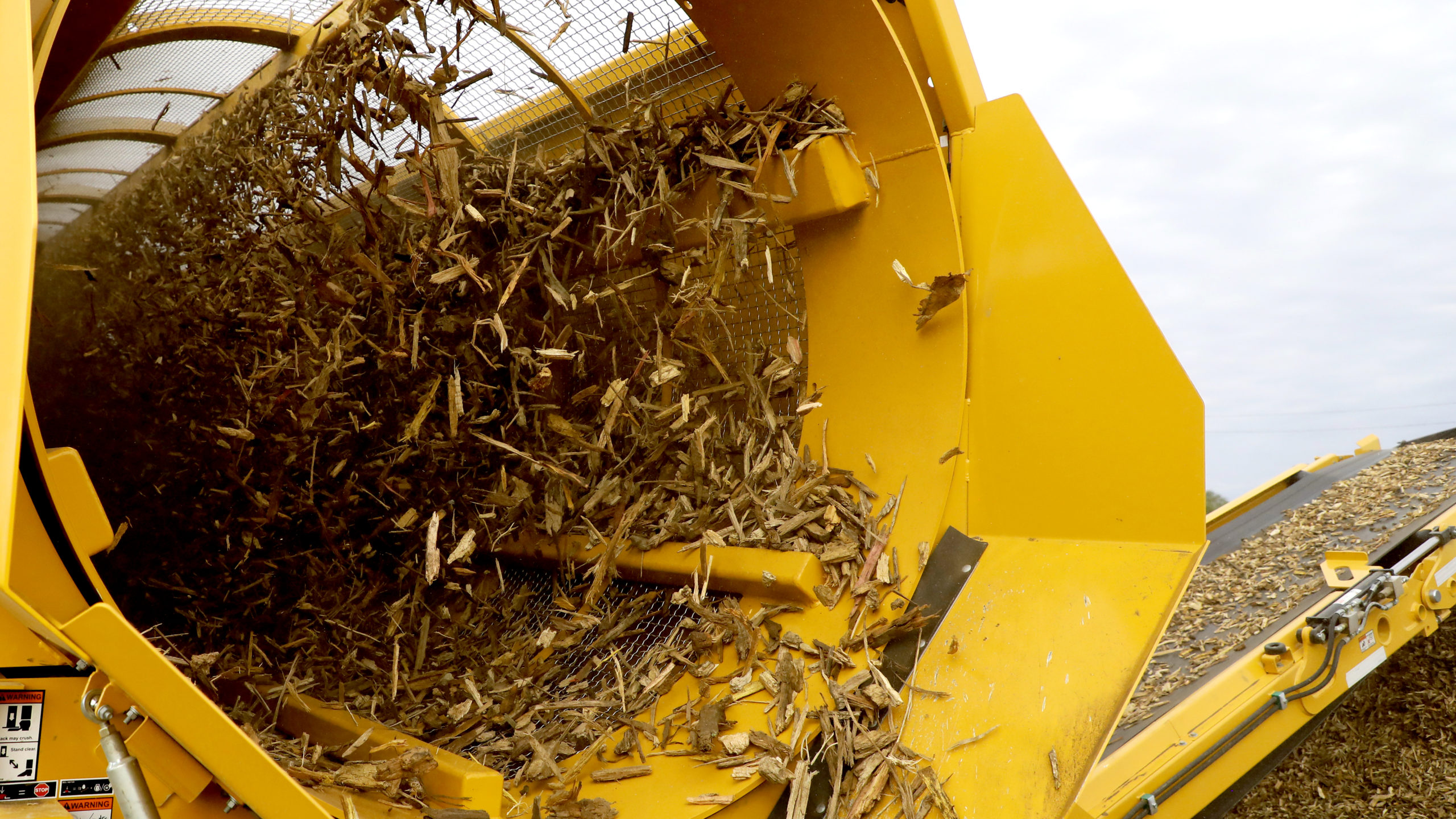| Top: Photo courtesy of Vermeer |
How you set up your trommel screen for processing compost and mulch directly impacts the efficiency of the screen. A new “pro-tips” guide from Vermeer describes four machine settings that can be adjusted to get the most out of material being fed into the screen: the angle, drum speed, hopper speed and mixing screen sizes.
To start, check the drum’s slope or angle to see if it needs to be decreased or increased. “Let’s say your angle is at five degrees,” explains Ted Dirkx, recycling and forestry sales manager at Vermeer. “Decreasing the angle of the drum to four or three degrees can give the material more time to work through the screen. This can help the material have better separation, since it will be lifted and thrown more. The downside is if the material is wet, the mud might make it ball together and impact the screen. If this starts to happen, it’s usually better to let it run through the drum at a faster clip and separate it as best as you can.” The other option is to increase the drum angle, which usually reduces the number of times material hits the screen before it exits the drum. This may lower output, but it can help keep the screens clean if the material is wet or muddy. The maximum angle the screen can be lifted, adds Dirkx, is seven degrees. “Depending on the condition of your material, this may be the better option. Keep in mind that there is a point where the material can get too wet or stuck together and the best option might be to let it dry first.”
Drum speed can be adjusted to help break up the material and cause it to separate. “For example, you could adjust the drum speed so it lifts the material up to 11 o’clock and throws it to a four or six o’clock position” explains Duwayne Bonhorst, a product specialist at Vermeer. “You can also reduce the drum speed, so the material hits the screen with less force. The downside is this can lower production and may increase spearing of the long material in the fines, but if the material is wet, reducing speed is one way to keep the screens open.”
The third factor to adjust for efficiency is hopper speed. Generally, a trommel is set up with a typical angle of five degrees and a drum speed of 18 rpm to 20 rpm. A slower hopper speed means that the fines will likely be fully removed halfway or three-quarters of the way down the drum. As the hopper speed is slowly increased, the line of separation will move closer and closer to the overs conveyor belt. A sign that the speed is too high is when fines are coming out in the overs.
The final setting to adjust for efficiency is the actual screens. One way to do this is to mix in slightly larger screens in the first quarter or half of the drum. “For example, say you want to add a set of 5/8-inch screen sections to the first two portions of the drum and leave the rest of the drum at half-inch screens,” says Dirkx. “As you watch the material gradually screen apart, most of the fines are being processed in the first half. By adding slightly larger screens, you can strike an optimal balance of productivity and quality by taking this route.”
Read the full pro-tips guide at this link.













